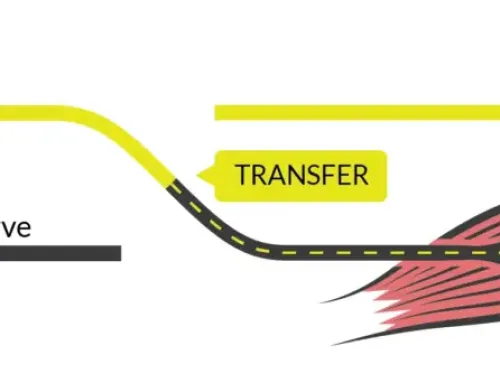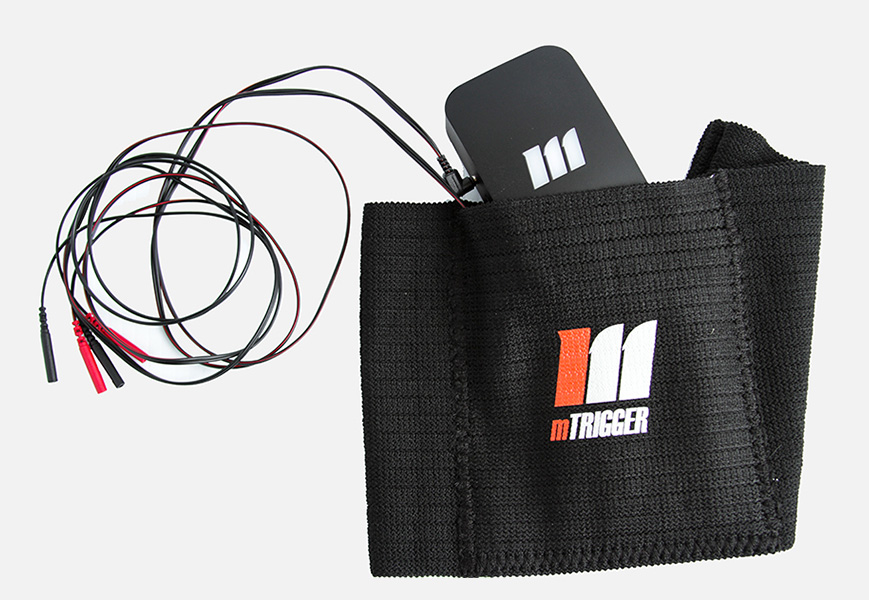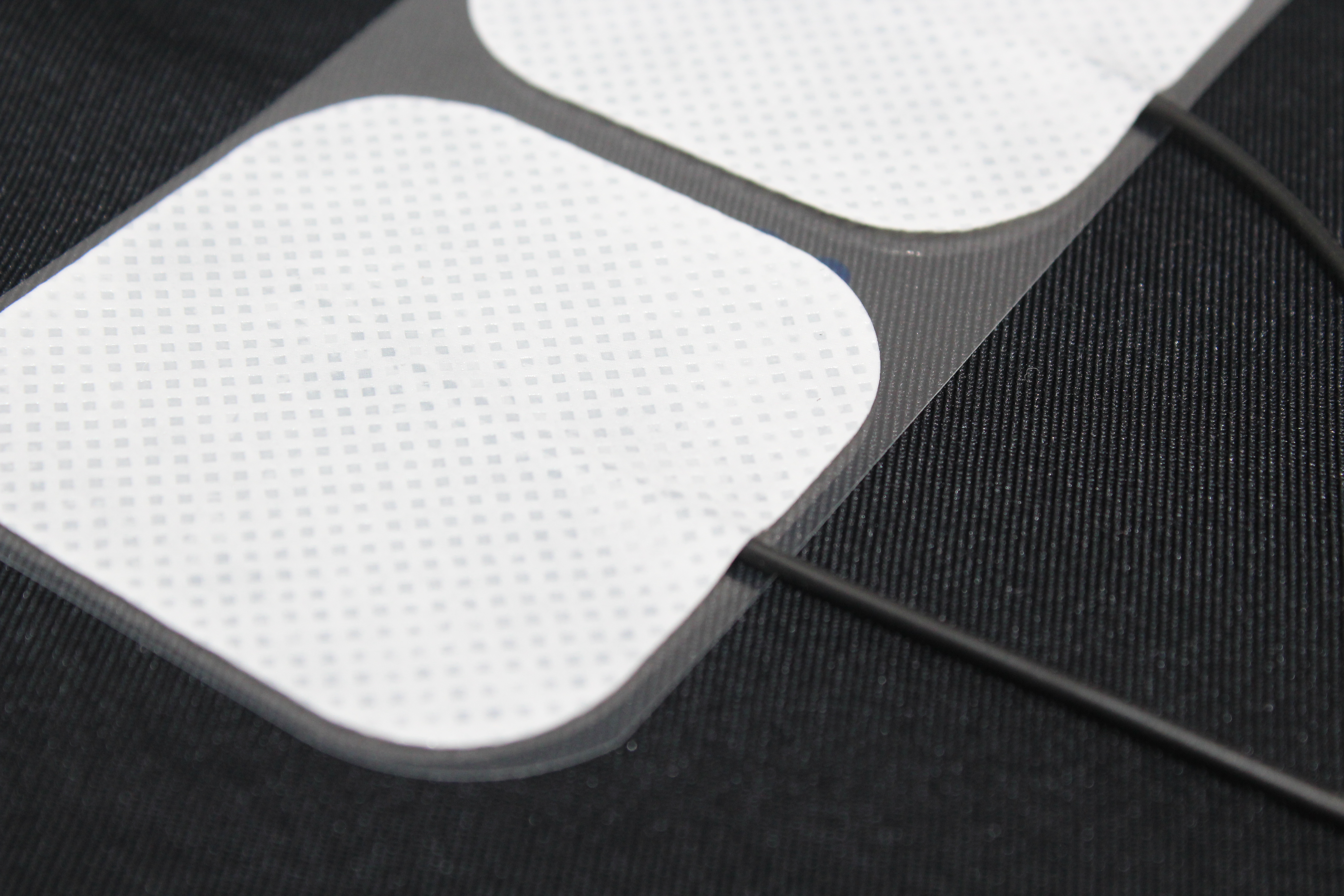Today we are going to focus on a feature of the mTrigger biofeedback system that is essential but often overlooked. The audio feedback function is attached to channel one and provides audio feedback to the patient when the muscle activation level matches the set goal level, as well as to cue contract and relax periods during timed sessions. Visually, this corresponds to when the activation meter is in the green. During an exercise, the audio feedback will sound whenever CH1 activation is in the goal range, and turn off when the level of activation drops below the desired level or during rest. The tone will sound whether or not you are timing/recording reps.
Audio feedback has been utilized successfully across several different areas of physical therapy. Runners with audio switches in the heel of their running shoes were able to improve and retrain their running form and foot strike pattern when given the cue to “run without any beeps.”[1] Patients after chronic mild traumatic brain injury were able to improve their balance using audio feedback to indicate when postural sway was outside the established parameters.[2] Finally, audio feedback provided when walking on a treadmill helped post-stroke individuals with limb peak anteriorly directed ground reaction forces, or put simply, with how heavily they landed on their affected limb.[3]
Clinical Application
Now, let’s review several different examples of how to best utilize mTrigger’s audio feedback function.
1. To re-enforce visual feedback
The addition of audio feedback to the visual activation meter gives an extra ounce of validation during an exercise. When the patient performs an exercise and sees the activation meter in green as well as hears the audio tone, they are able to equate the proper muscle activation pattern with their movement. Furthermore, during longer muscle contraction times, the audio provides reassurance that the contraction goal is being reached AND maintained throughout the length of the contraction.
2. As a stand in for visual feedback
When performing certain exercises, it can be challenging to look at the visual feedback screen. For instance, when lying on your stomach or right up against the wall, clear visualization of the screen is challenging and often compromises the exercise. These are great examples of when the audio feedback function can be heavily utilized. In this situation, mTrigger’s biofeedback device still has the capability of assisting someone in understanding the correct movement patterns and muscle activation during an exercise.
Another solid use for audio feedback is when you are working on removing or changing feedback styles. The benefit of the visual feedback initially is that the patient can see feedback at all times, even when they are unsuccessful at achieving the proper muscle activation. With the audio feedback, the patient only gets feedback when they are at the desired level of muscle activation. In this case, there is still feedback, but it is less than in the initial visual situation. Ultimately, the patient will need to perform these exercises correctly without any feedback at all. Therefore, the transition from visual to audio feedback can be a beneficial one.
3. For improving timing of muscle activation and movement
A unique and imperative way audio feedback can be used is for improving movement and timing. With certain exercises, achieving the activation of one muscle group BEFORE the activation or movement of another group is imperative. See what Dr. Jared Vagey has to say about it here. An example of this is a simple glute bridge. Often times, clients will over utilize their lower back instead of properly activating their glute muscle before movement. With audio feedback, cueing for glute activation and the sound to go off before lifting the hips off the table can help teach timing and proper pain free movement.
4. In relaxation training – “turning off the sound”
In instances of compensation, the audio tone can be used as a tool for teaching someone how to minimize movement compensations (ie: shoulder shrug) or down regulate an overactive muscle. The upper and lower traps are a classic example here. With shoulder elevation, over activation of the upper trap is commonly correlated with a lack of lower trap activation. Using the audio feature on the upper traps, mTrigger’s audio feedback can help teach patients what simultaneous increased lower trap activation and decreased upper trap activation feels like with shoulder elevation. Additionally, with repetitions, the lack of audio coming on during the exercise helps to reinforce what the proper movement feels like.
Note that in the second two examples, the rep timer is not being used (audio or visual), only the activation meter indication.
Summary
Training with the mTrigger audio feedback function can help to further support and expand the benefits of your normal rehabilitation exercises. The audio feedback function provides several opportunities. It can be used as biofeedback for exercises where visualization of a screen may be challenging or to offer a reinforcement to the visual feedback a patient is already receiving. Finally, it can be used to help address movement compensation patterns and improve the timing of muscle activation.
Need Ideas for Non-Operative uses of mTrigger Biofeedback?
|
More Information on Getting Set-Up
|
References
[1] Wood CM, Kipp K. Use of audio biofeedback to reduce tibial impact accelerations during running. J Biomech [Internet]. 2014;47:1739–1741. Available from: https://pubmed.ncbi.nlm.nih.gov/24679712/.
[2] Campbell KR, Peterka RJ, Fino PC, et al. The effects of augmenting traditional rehabilitation with audio biofeedback in people with persistent imbalance following mild traumatic brain injury. Front Neurol [Internet]. 2022;13. Available from: https://pubmed.ncbi.nlm.nih.gov/36267889/.
[3] Liu J, Kim H Bin, Wolf SL, et al. Comparison of the Immediate Effects of Audio, Visual, or Audiovisual Gait Biofeedback on Propulsive Force Generation in Able-Bodied and Post-stroke Individuals. Appl Psychophysiol Biofeedback [Internet]. 2020;45:211–220. Available from: https://pubmed.ncbi.nlm.nih.gov/32347399/.








Leave A Comment